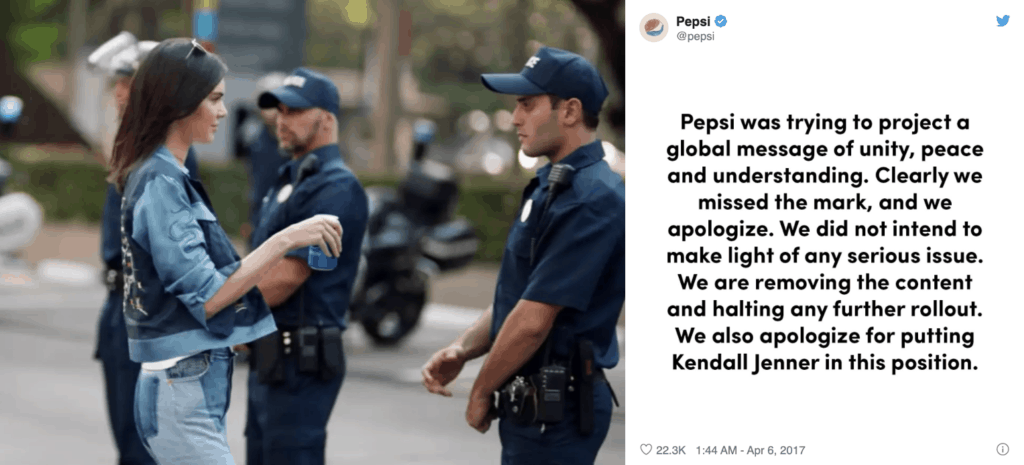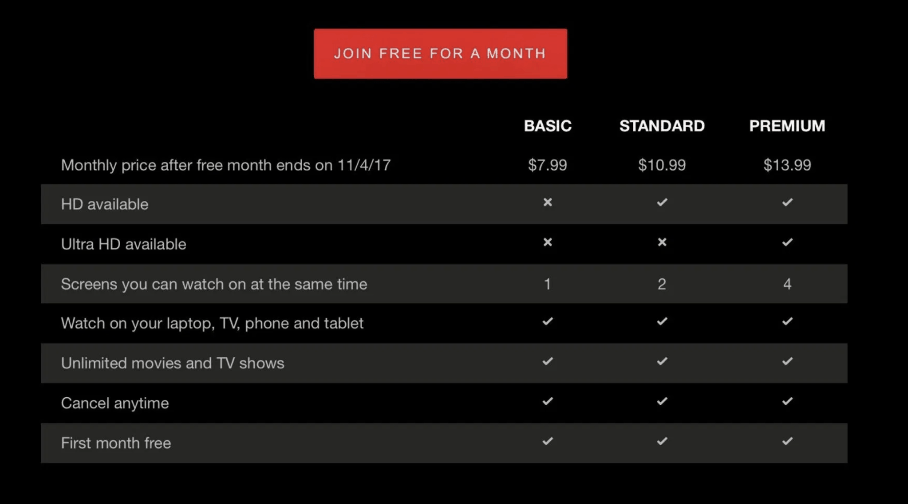Branding has always existed from the start, because branding — is timeless. We might not be able to see or recognize branding right away, but it is everywhere around us. From the flags of different countries, to the logos that warriors and war ships donned to represent themselves, this is all part and parcel of branding.
Did you know that the term “brand” is actually derived from the Old Norse word brandr or “to burn”, which refers to the practice of branding livestock in the past? Pretty interesting right? At its crux, branding is about taking ownership of the values of your company, and storytelling it to earn your customers’ loyalty. Understanding how branding has evolved over the years, can help us realise what is needed to effectively brand our businesses today.
How has branding changed?
Given the ever-changing landscape of how consumers relate to brands, brands have become smarter and more innovative by constantly coming up with new ways to stay relevant and to stand out. How and why businesses brand themselves has changed over the years, but the purpose of branding has not (Source: insightsucces.in).
1. The Rise of the Internet
The first and most obvious way in which branding has changed, is with technological advancement and the rise of the internet. In the past, everything was prepared beforehand — commercials and advertisements could be well crafted way in advance, and companies could control the narrative of their brands through the media channels they choose to advertise in.
Today however, with the advancements in technology and the rise of the internet, everything becomes instantaneous and real time. Your marketing effectiveness is determined by your ability to respond quickly to opportunities, trends, queries, crises and situations. There has also been a shift in power from the boardrooms of companies to the hands of the consumers. These days, you can never expect what gets thrown at you. People have more freedom than ever to share their opinions online; and they can either openly support your brand or criticise it. We see this in the rise in the number of brand backlashes these last few years, as their missteps are heavily scrutinized by a growing and increasingly unforgiving online community. This has also led to the many consequent need for brands to issue public statements and apologies in order to cease the hate fire and salvage their reputation (which for some, is a reputation that they have painstakingly built for many years).
One memorable campaign that received quite a bit of backlash recently, was Pepsi’s advertisement with Kendall Jenner. People were outraged when the ad made reference to the Black Lives Matter protests as it was seen as trivializing the movement.

Viewers took to Facebook and Twitter to express their unjust and Pepsi had to pull the ad and issue a statement of apology (image: Independent.co.uk). The negative buzz that was generated shows how consumers can make or break a brand and its reputation, especially with this digitally empowered generation. Therefore, in this day and age, brands have to tread carefully when it comes to creating and pushing out content, and to respond promptly in the face of crises or new trends — because your brand image depends on it.
2. Increased Exposures for Brands
Secondly, in the past, where social media did not yet exist, television commercials, radio and print ads were heavily relied on for brand-building as it helped to raise awareness. However, these avenues were often expensive and only the bigger brands could afford them. As such, new businesses and small brands were faced with a very unlevelled playing field and the odds stacked against them. It was harsh and difficult back then for small brands to survive or even launch.
Now, look around you. Almost everyone owns more than one social media account. Furthermore, it costs next to nothing to create one. Today, social media is not just the means we use to connect with one another, but with brands and products as well. By having ready access to social media platforms, it gives brands of all sizes an opportunity to create, publish and broadcast their own content at virtually no cost, so as to increase their brand visibility and exposure. In fact, with such platforms, you, me, or anyone with an idea can start a business today. This digital and social media revolution has allowed brands to get equal opportunities to be seen and to reach a wider audience more effortlessly.
3. Product-focused VS Emotion-focused
Thirdly, consumers used to focus more on the physical features of a brand’s product — what can it do, what benefits it can offer, etc. Selling the product’s features was one effective way for brands to market. Today, unless you are an innovative, first-of-its-kind, market-leader brand like Apple, that strategy is obsolete. The focus has since shifted to how brands can make consumers feel — “what does it reflect about me?”, “what would people think if I am associated with this brand?”. Storytelling as a strategy has thus grown. Brands are now channeling their marketing resources to finding out how they can emotionally engage their consumers and convert them into loyal customers. In fact, more people today tend to despise brands that focus overly much on lauding their own product features rather than on what the customer wants or values.
One great example is Nike’s advertisement “What’s Your Motivation?“, where instead of its usual focus on athletes, it features your ordinary boy-next-door — but one with a dream and a motivation — someone whom the general public can relate to. The video also highlights things that appeal to the emotional side of viewers. First, Nike focuses on one individual instead of 50, which makes the video more personable. Second, it tells the story of the inner struggles of one’s journey. Third, apart from just pushing its products, Nike also shows viewers what the brand believes they are capable of — that they do have the motivation to work hard and achieve their dreams. Thus, based on the understanding that we usually buy things that appeal to us — who we are, what we treasure, what we value, and what we desire to achieve, Nike’s ad hits home on us emotional beings. After all, whenever we feel for or care about something, we’re usually more willing to act on it (Source:referralcandy.com).
4. Consumer-driven Focus
Lastly, unlike the past, consumers today are now part of the brand-building process as well, and are what we call “co-creators” of the brand and brand experience. They are able to shape how people view your product and your business and likewise, steer the conversations on social media (Source: 10twelve.com).
To increase brand affinity and the resultant positive word-of-mouth for your brand, your brand has to consistently create positive customer experiences, and be able to create a strong relationship with each and every customer. That is why more and more brands are putting their customers/users first, and allowing them rather than their products, to drive their strategy. This is definitely a more effective form of branding and marketing as instead of pushing its products to consumers, it is the consumers’ needs that they have gotten to understand, that is pulling brands to them.
An exemplary brand that has made an effort to understand its customers and deliver a good customer experience is Netflix, where “personalization is the key feature of their movie and series selection.” (Source: omniconvert.com) Just take a look at their seamless customer journey: First-time Netflix users are able to enjoy a month of free trial and thereafter, choose their preferred membership plan with the flexibility of cancelling it anytime.

Apart from the wide selection of movies and drama series available, there are no commercial breaks in between and users can download any episode(s) to watch later or for ‘on the go’. Netflix’s algorithm also suggests movies to users based on their preferences and watch history. By ensuring that it does not employ a one-size-fits-all customer strategy, Netflix is able to effectively deliver a personalised experience that is different for every user.
How can brands stay relevant?
With the market changing almost every second, it is important that brands know how to adapt and stay relevant in this digital age. This means making full use of content marketing, social media platforms, and really, anything that is digital.
1. Making a transition to digital
If you do not already have a digital presence, what are you waiting for? Your brand’s online presence is going to be the front of your business, so make full use of the digital tools available! Websites? Make your website informative, interactive but also intuitive, where people don’t have to ask even more questions after browsing through it. Apps? Ensure that your brand is on an optimized platform or medium that is easily accessible to users daily, like through their smartphones. Instagram? Almost everyone has a social media account (and by everyone, we mean everyone — including brands). Instagram is one of the best ways to brand yourself. However, it is important to remember, the social media content being released has to still be relevant and attractive to consumers, all while staying consistent with the brand’s personality and values.
2. Understanding your consumers (and competitors)
This is where brands have to start researching and understanding their market — to constantly stay updated on what is trending, on what are the emerging or unmet needs of their consumers, and also on the strategies and tactics that are being adopted by their competitors. As illustrated earlier, crafting a strategy that is user-first or customer-focused can help to build brand affinity, differentiate the brand, and ultimately drive branding success. Sites like LinkedIn allows brands to research target customers by their information, and Twitter for directly speaking with customers in a more personable manner (Source: Ripleytraining).
3. Bold innovation
More often than not, brands that have experienced a major success in the past would be more reluctant to change the formula that granted them that success in the first place — it’s normal, we get it. However, being innovative pays off. Innovation is doing something different, something bold enough to make you stand out from your competitors. Think — what would give you an edge over your competitors?
Here is a little nudge to you to take another look at your brand story, and see what new ways and interesting angles can you tell that story, in a manner that is still consistent with your core values. In other words, what new ways can you engage with customers, to give them a fresh perspective of your brand? Asking these key questions is the first step to helping your brand stay relevant in this fluid landscape.
How does Branding affect us?
Branding has the power to make anyone feel accepted, simply by fostering a community of like-minded individuals who believe in the same values, and feel valued in return. Good branding validates the choices that we make everytime we interact with the brand, and gives people a reason to want to be associated with the brand.
Take Apple for example. Apple’s branding has an effect on people — every time they launch a new product, people are eager to queue for hours just to get their hands on them. Why? They are not just paying for the product, they are paying for the association. Besides the excellent customer service that they receive at the Apple stores, these people also get the opportunity to show off their latest iPhones to their friends. This is the experience and association that customers are willing to “exchange” for a few hours and a couple thousand dollars.
In fact, great brands can become timeless when they have the flexibility to adapt to changes over the years. They understand that the identity of their brand has to be relevant at all times, all while ensuring that customers are able to recognize it and still love it. Here’s a little tip: defining your brand with over-specificity makes it harder for rebranding in the future. Just remember — the key is simplicity and consistency.
Just take a look at a timeless brand like Coca Cola, and how they have stayed so relevant and popular even after 128 years! Their logo stays iconic and has only gone through minimal changes to the version we know and love today. Albeit not forgetting that one time Coca Cola changed their logo and packaging to the ‘New Coke’, with the block font and blue coloured can that ended up resembling Pepsi. That huge flop caused sales to drop tremendously. If this is any indication — stick to the basics, you can never go wrong with that.
That said, branding will continue to evolve over the next few years and decades to come. Hence, it is important to always keep up with the changes, be it in the market or in this digital landscape, so as to remain relevant or if you wish — timeless.
Are you considering a branding or rebranding exercise? Contact us and we’ll be happy to assist!
— —
Hero image: Sarang Pande, Unsplash
